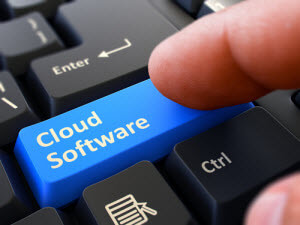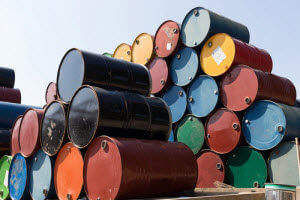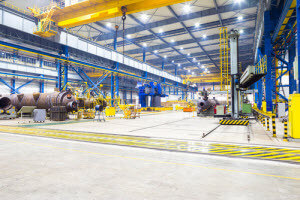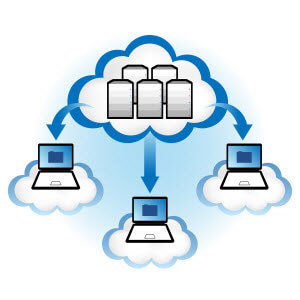Common Misconceptions About Cloud ERP Security
Every manufacturing business loves implementing the latest technologies in their facilities. However, many are hesitant about cloud ERP servers and their security, but are the myths about these systems true?
No, these myths aren’t true, and to help you understand why, we’ve debunked some of the most common misconceptions about cloud ERP security below.
Myth: The Cloud Isn’t Secure
 Fear of technology is one of the most common issues the manufacturing industry deals with. That’s why many businesses choose to hire in-house IT workers, thinking they can better ensure security for their servers. However, using the cloud offers more peace of mind and protection.
Fear of technology is one of the most common issues the manufacturing industry deals with. That’s why many businesses choose to hire in-house IT workers, thinking they can better ensure security for their servers. However, using the cloud offers more peace of mind and protection.
IT resources can have a difficult time keeping up with viruses, malware, and hacks that occur daily. Implementing a cloud ERP makes it easier to spot and prevent harmful attacks on servers because these systems support application vulnerability, multi-layer firewall testing, and renowned facility security, according to Plex.com.
Myth: The Cloud Is Tedious to Use
Traditional security software requires you to install it to one server at a time and one location at a time. They may also need to have individual users log in to ensure complete security. However, that’s not the case when you use a cloud ERP.
 Security for the cloud system is automatically applied for all users at the same time, so there’s no waiting and no multiple installations. Instead your servers get immediate security without interruption.
Security for the cloud system is automatically applied for all users at the same time, so there’s no waiting and no multiple installations. Instead your servers get immediate security without interruption.
Myth: The Cloud Isn’t Reliable
With highly publicized cloud interruptions frequently popping up on news sites, many are under the assumption that outages happen more often in the cloud. Because of this, businesses believe that storing their ERP servers in an IT closet or rack in their facility ensures less downtime.
However, if those servers aren’t properly backed up or if they fail, businesses can experience severe downtime. In fact, Plex.com states that businesses using regular ERP servers get more than an hour of unplanned IT downtime every month. Those using a cloud ERP may only experience a few minutes of downtime.
Myth: Maintaining a Cloud ERP Is Expensive
A cloud ERP may be an advanced tool, but compared to traditional ERP servers, they’re not as expensive as you may think, especially when it comes to software updates.
Cloud ERP systems use versionless software that’s updated in real time, so it doesn’t make an impact in the background. Thanks to this, businesses using cloud ERP systems won’t have to spend extra money on server purchases and disruptive software upgrades.
Cloud ERP servers are reliable and secure, and they can help your business run smoother. So don’t let the myths and misconceptions about these systems hold back your manufacturing business.
For more industry news, check out CPV Manufacturing’s blog.

 According to David Eyton, the BP Group head of technology, these new technologies could make the energy supply and consumption safer and more efficient, cost-effective, and reliable. “These technologies are already transforming the oil and gas industry, and the longer term possibilities are frankly difficult to imagine,” he said.
According to David Eyton, the BP Group head of technology, these new technologies could make the energy supply and consumption safer and more efficient, cost-effective, and reliable. “These technologies are already transforming the oil and gas industry, and the longer term possibilities are frankly difficult to imagine,” he said. BP also states that digital technologies will help to boost offshore energy production. These will make radical changes in how energy is used, extracted, and found, thus opening opportunities for more efficient operations through unparalleled levels of data analysis.
BP also states that digital technologies will help to boost offshore energy production. These will make radical changes in how energy is used, extracted, and found, thus opening opportunities for more efficient operations through unparalleled levels of data analysis.
 Users can find practical ways of exploring existing assets, discovering unseen relationships, and improving opportunities.
Users can find practical ways of exploring existing assets, discovering unseen relationships, and improving opportunities. According to the Internet of Things Agenda, “IIoT incorporates machine learning and big data technology, harnessing the sensor data, machine-to-machine communication and automation technologies that have existed in industrial settings for years. The driving philosophy behind the IIoT is that smart machines are better than humans at accurately, consistently capturing and communicating data.”
According to the Internet of Things Agenda, “IIoT incorporates machine learning and big data technology, harnessing the sensor data, machine-to-machine communication and automation technologies that have existed in industrial settings for years. The driving philosophy behind the IIoT is that smart machines are better than humans at accurately, consistently capturing and communicating data.”

 As industrial manufacturing improves, there’s a large impact on the job market that can lead to an improved US economy.
As industrial manufacturing improves, there’s a large impact on the job market that can lead to an improved US economy.


